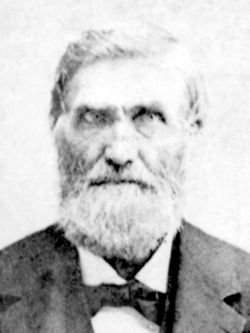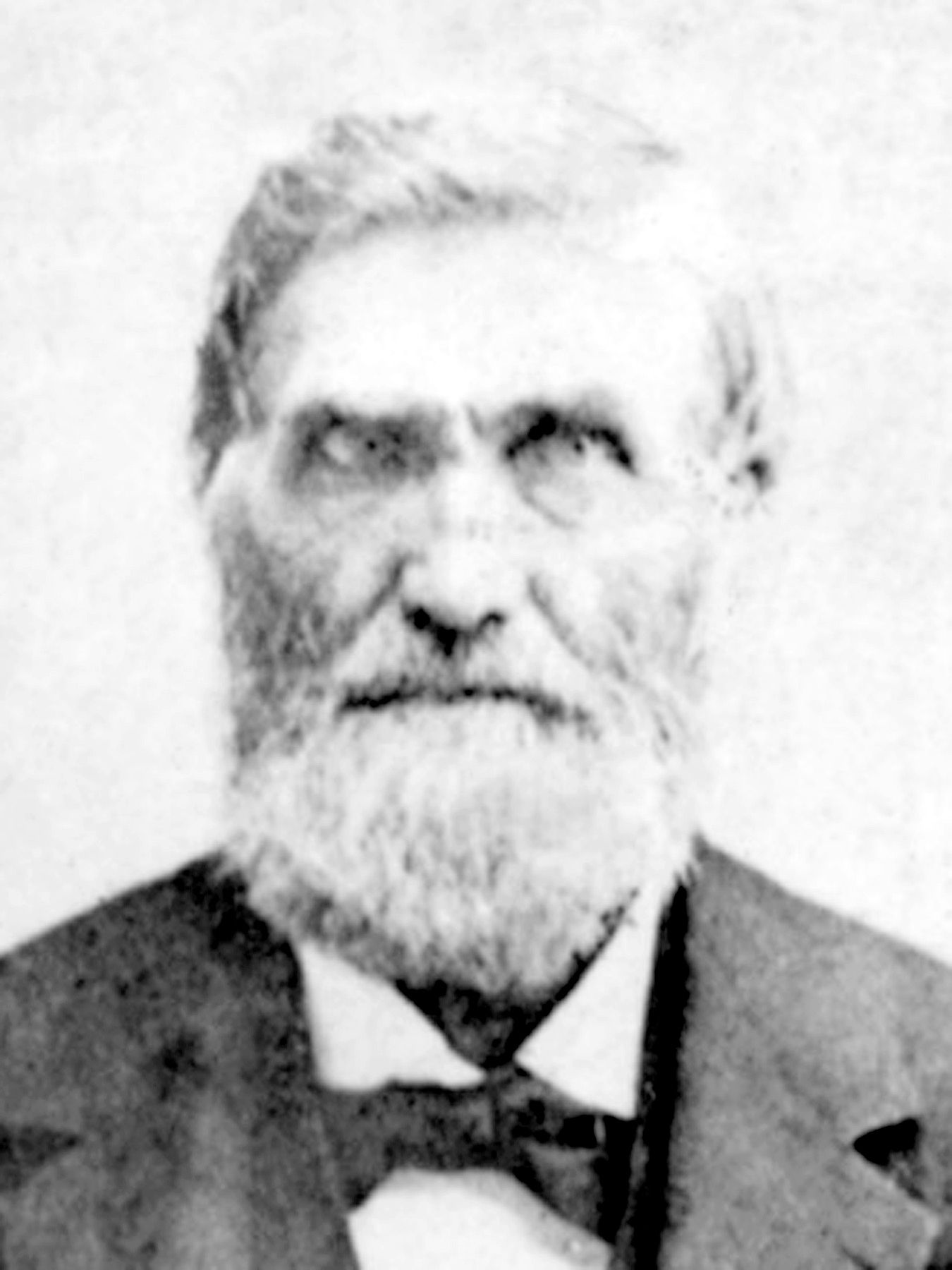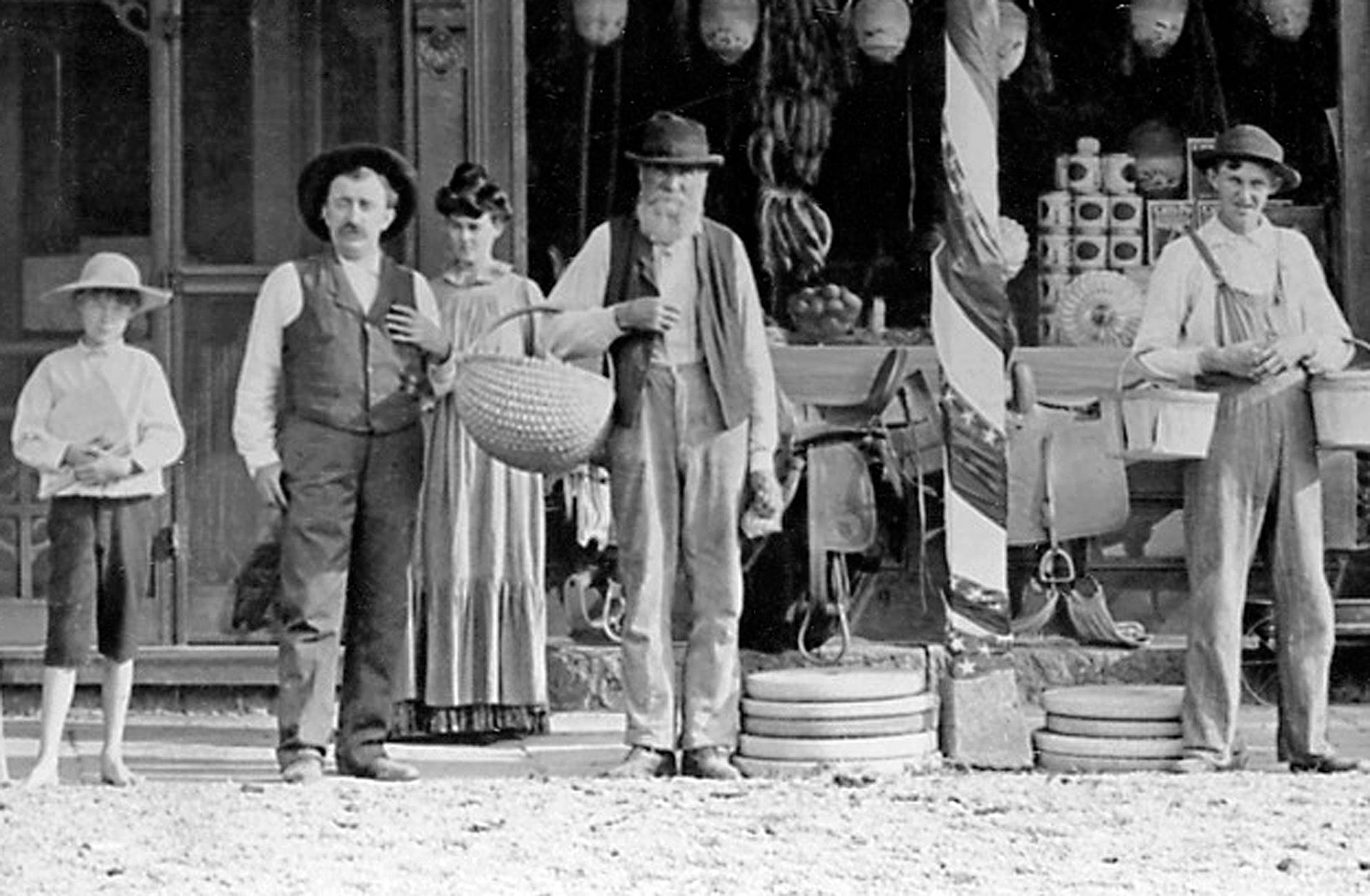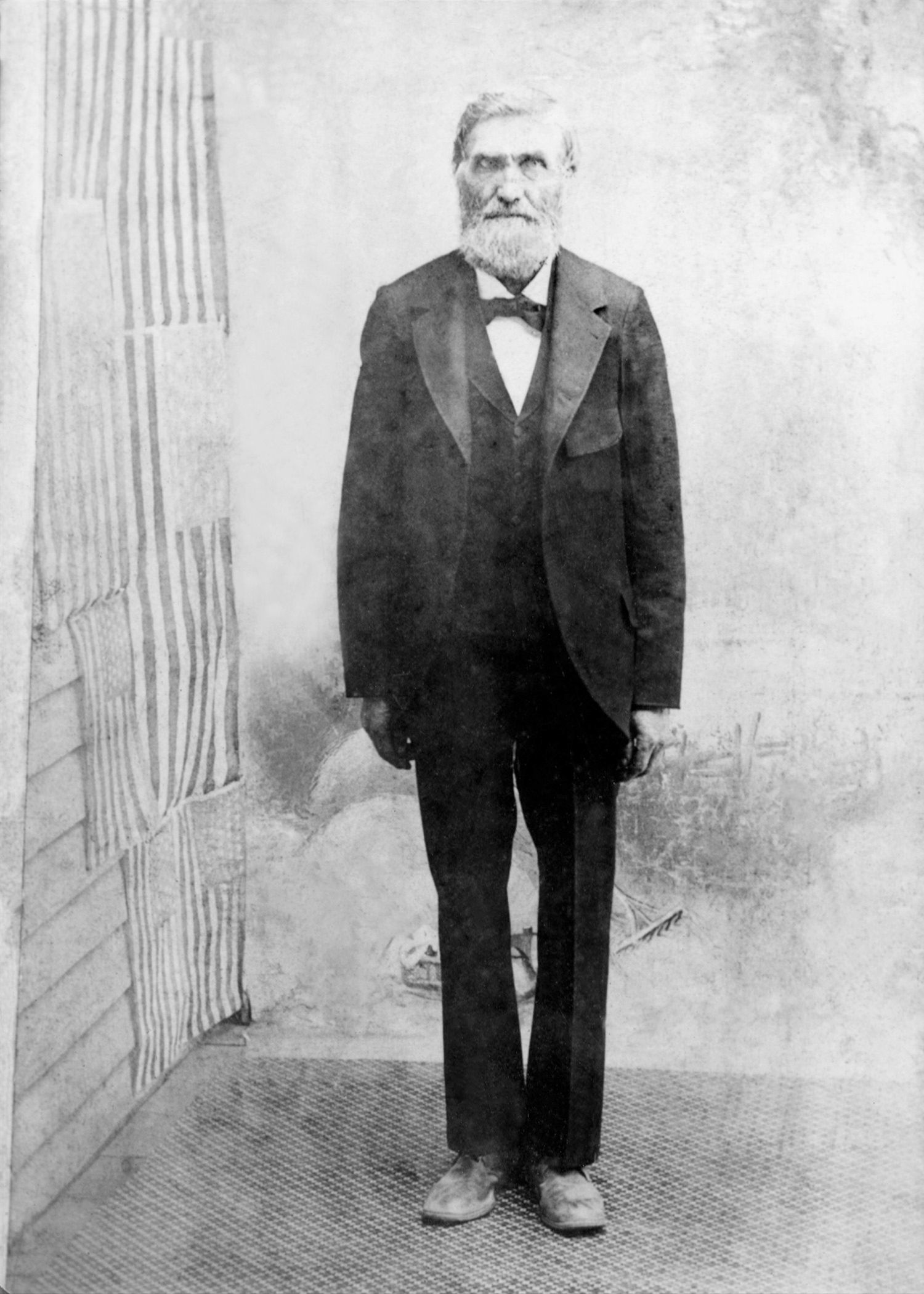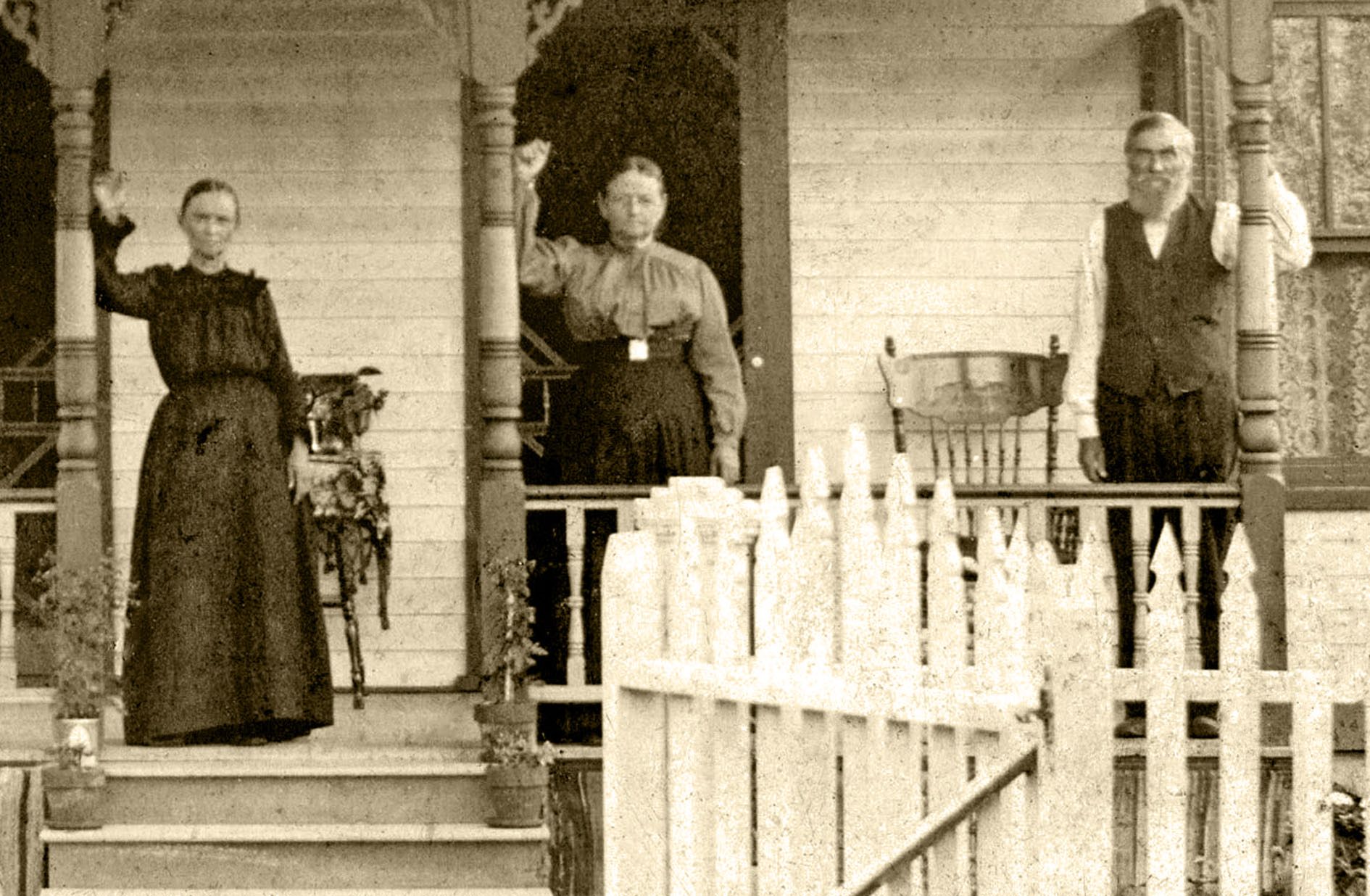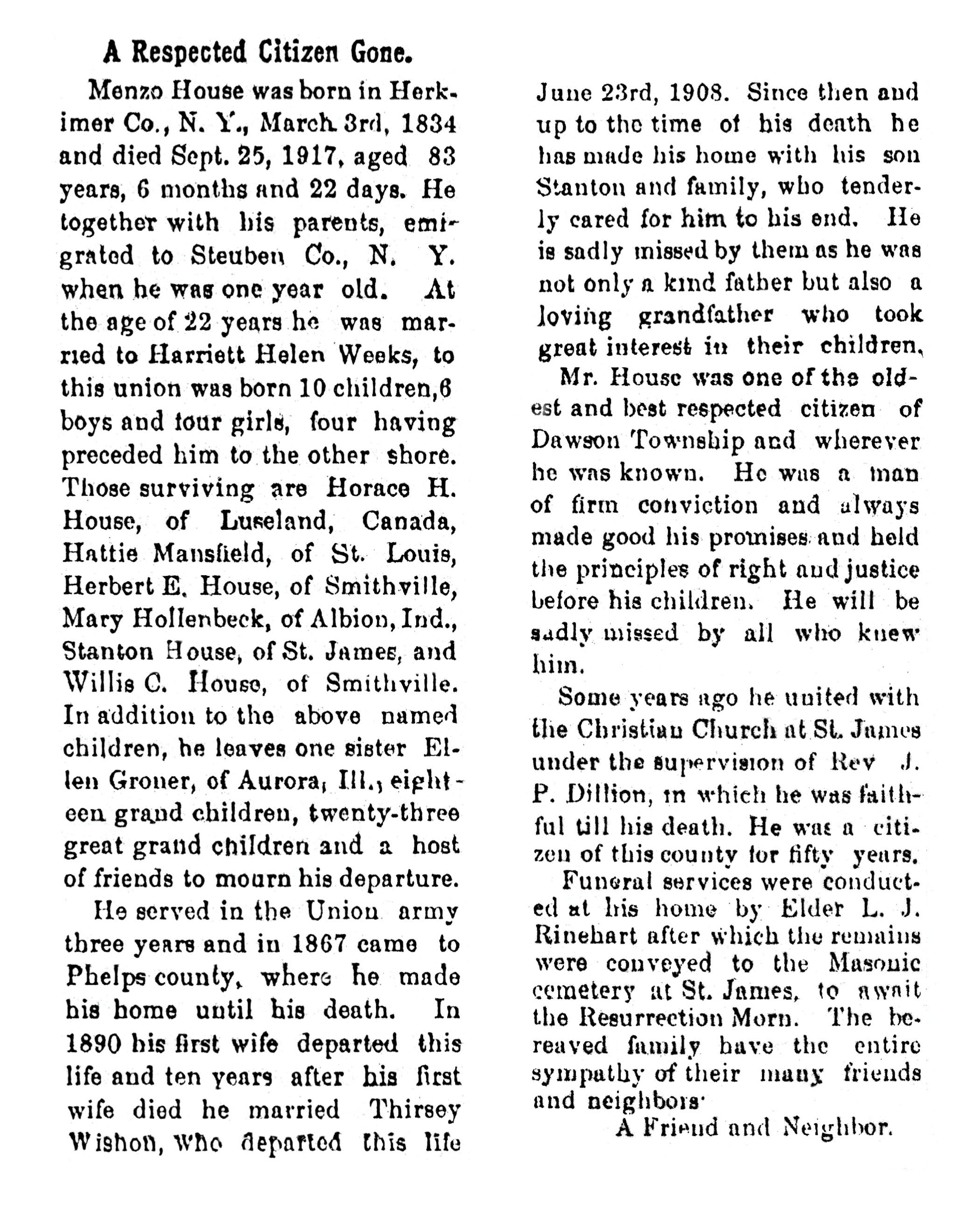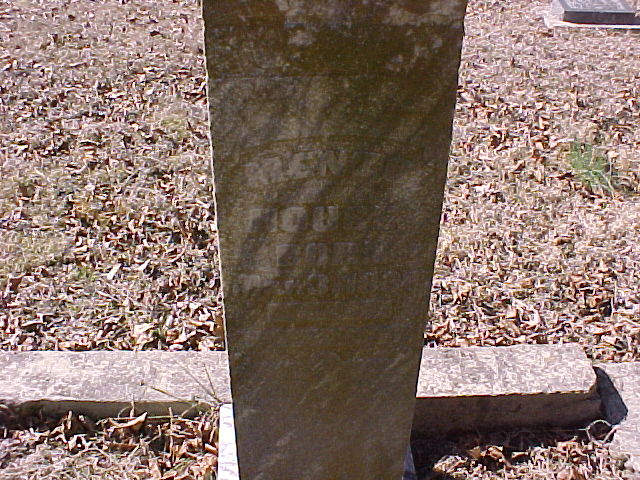Menzo House was born in Herkimer County, NY on March 3, 1834. He moved with his parents Abram P. House and Elizabeth (Shaut) House, along with older brothers, Isaac and William and older sisters, Magdalena and Lauria, from Herkimer County to Steuben County, NY in 1835, when he was one year old [1].
In 1855 Menzo (21) was living in Avoca, NY in a $20 log house with his sister Magdalena (26) and brother-in-law James Woodward (24). Menzo and James were both carpenters at that time [2]. On February 26, 1856, Menzo married Harriet Helen Weeks in Prattsburgh, NY [6]. In 1860 he was still a carpenter, now living in Wheeler with Harriet and two children, Horace and Hattie. His real estate was valued at $600, and his personal estate was $125 [4].
In 1862 the Civil War was not going well for the Union and President Lincoln issued a directive to recruit 300,000 additional troops for the Union army. Menzo (28) and his brother Peter (25) enlisted on August 11, 1862, at Wheeler, NY, to serve for 3 years [5]. They were mustered in as privates, Company K, 107th Infantry, New York Volunteers, at Elmira, NY on August 13, 1862 [5,6]. Menzo is described as being 5' 9" tall, fair complexion, with blue eyes and brown hair [6]. Menzo and Peter's older brother, William, also enlisted in August 1862 but was mustered in as a private in the 161st Infantry, NY Volunteers [7].
The 107th left New York on August 13, 1862, and served in Whipple's Division, Defenses of Washington, D.C., until September 12, 1862. They were then attached to the 3rd Brigade, 1st Division, 12th Corps, Army of the Potomac. On September 17 of that year, they served in the battle of Antietam, MD. During 1863 the 107th served in the battle of Chancellorsville, VA on May 1-3; the battle of Gettysburg, PA on July 2-4; the battle of Jones' Crossroads, MD on July 11-12 and a battle near Williamsport, MD on July 14. In August of 1863 they were transferred to the 2nd Brigade [8].
From May 3 until September 2, 1864, the 107th participated in the Atlanta, GA campaign. They were transferred to the 20th Corps, Army of the Cumberland in April of 1864. Georgia engagements were as follows: Resaca on May 14-15; near Cassville on May 19-20; Dallas on May 25-June 4; Kennesaw Mountain on June 9-July 2; Golgotha on June 16-17; Noses Creek on June 19-20; Culp's Farm on June 22; Peachtree Creek on July 20; and Atlanta from July 21 to August 26. They then joined General Sherman's Savannah campaign, and the march to the sea, on November 15, 1864 [8].
Three days into the Savannah march, on November 18, 1864, Menzo and Peter, along with 50 others from their company [5], were captured near Social Circle (Rutledge [9]), GA while foraging for food and supplies for their regiment. Menzo was taken to Florence, SC and imprisoned [6].
With the capture of Atlanta, Confederate authorities became concerned that Sherman would liberate Union prisoners at Andersonville. The prisoners had to be moved. Florence, SC was chosen as the site for a new stockade, much like the one at Andersonville. When Menzo arrived at Florence there were over 11,000 prisoners there [10]. He was "a strong healthy man when he arrived" but became "very sick and was crazy part of the time" [6,11]. He was sent to the prison "hospital," located within the stockade [6] which was built with branches from trees, providing protection from the sun but not the rain [12].
Menzo was exchanged on February 28, 1865, and paroled at N. E. Ferry, (Wilmington) NC on March 3, 1865. From there he went by boat to Camp Parole, (Annapolis) MD, arriving March 10. He was then sent to a hospital in Baltimore and finally to a hospital in York, PA, where he was mustered out on June 22, 1865 [6]. The following day he received an extra $48.00 for Prisoner of War Service [13]. When he was released from prison he could hardly walk [6] and weighed barely 100 pounds. When he held his hand to the light, bones could be seen [21].
After the Civil War, in 1867, Menzo received an 80-acre land grant about 8 miles north-northeast of St. James, MO, in Phelps County [15]. He traveled from New York to Missouri by team and wagon in time to build a log cabin before winter [13]. His wife, Harriet, with their three young children and two bushel baskets of food came to Missouri by train, arriving at Union Station (in St. Louis [3]). Harriet took the children to a hotel but would not go to their second-floor room because she was afraid of fire, so they stayed all night in the waiting room [14]. St. James had been accessible by rail since 1860 [16] and it is assumed that she and the children completed the journey by train [3]. When Harriet arrived at the one room log cabin near St. James it had a dirt floor, unlike the nice home she had left in New York [13,14].
Menzo and Harriet were living in St. James Township, Phelps County in 1870 with children Horace, Hattie, Herbert, Mary and Stanton. Menzo was a farmer with real estate valued at $500 and a personal estate of $499. Horace was helping his father on the farm [17].
In 1880 Menzo was still farming in Phelps County with Horace, but he, Harriet and the children (including Hattie) were now living in Dawson Township. Two additional children were living in the household, Willis and Harold (Hattie's son). Herbert, Mary, Stanton, and Willis were attending school [18]. In 1894, Horace and Willis left for Oklahoma. Harold went with them for a while [14].
Menzo eventually built a very nice home and increased his land acreage to well over 200 acres. He was a Republican all his life and served as Justice of the Peace a number of terms. In later years (early 1900's in St. James [1]) he was in the farm implement business, being an agent for the W. A. Wood Binders and Mowers [13], dealing in Swift's fertilizers, drills and fans [1].
On February 15, 1890 [6], at the age of 54, Harriet died. Ten children were born to Menzo and Harriet (6 boys and 4 girls); four children preceded him in death [1]. Menzo married Thirsey Wishon December 28, 1901 [22]. Thirsey died June 22, 1908, at the age of 65 [22]. After Thirsey died, Menzo lived with his son Stanton and family [19].
Menzo was a member of the Christian Church. "(He) was one of the oldest and best respected citizens of Dawson Township and wherever he was known. He was a man of firm conviction and always made good his promises and held the principles of right and justice before his children" [19].
Menzo died in St. James, MO on September 25, 1917, at the age of 83 [19] and is buried in Masonic Cemetery, St. James, MO with his two wives [3] and twin infant children [20].
Endnotes:
[1] Unknown, Old family letter
[2] 1855 NY census, Avoca, Steuben Co.
[3] Lawrence E. House, II
[4] 1860 U.S. census
[5] 1903 AGO report, State of NY
[6] Menzo's military pension records
[7] 1865 NY census, Wheeler, Steuben Co.
[8] Frederick Phisterer, "New York in the War of the Rebellion", 1912
[9] Clayton's 1879 Steuben Co. History
[10] Friends of the Florence Stockade
[11] Menzo's 1st Sgt., who was imprisoned with Menzo
[12] Geo. Hitchcock, "From Ashby to Andersonville"
[13] Delbert Barrett & Irene (House) Ebinger
[14] Kathleen (Helfrich) Schebeck
[15] Phelps County, MO land records
[16] St. James Bicentennial Book
[17] 1870 U.S. census
[18] 1880 U.S. census
[19] Obituary of Menzo House
[20] Frank Stanton House
[21] Delbert Barrett, per Menzo's sister, Mary
[22] Obituary of Thirsey House
Compiled by Lawrence E. House, II, 2nd great-grandson of Menzo House.
Menzo House was born in Herkimer County, NY on March 3, 1834. He moved with his parents Abram P. House and Elizabeth (Shaut) House, along with older brothers, Isaac and William and older sisters, Magdalena and Lauria, from Herkimer County to Steuben County, NY in 1835, when he was one year old [1].
In 1855 Menzo (21) was living in Avoca, NY in a $20 log house with his sister Magdalena (26) and brother-in-law James Woodward (24). Menzo and James were both carpenters at that time [2]. On February 26, 1856, Menzo married Harriet Helen Weeks in Prattsburgh, NY [6]. In 1860 he was still a carpenter, now living in Wheeler with Harriet and two children, Horace and Hattie. His real estate was valued at $600, and his personal estate was $125 [4].
In 1862 the Civil War was not going well for the Union and President Lincoln issued a directive to recruit 300,000 additional troops for the Union army. Menzo (28) and his brother Peter (25) enlisted on August 11, 1862, at Wheeler, NY, to serve for 3 years [5]. They were mustered in as privates, Company K, 107th Infantry, New York Volunteers, at Elmira, NY on August 13, 1862 [5,6]. Menzo is described as being 5' 9" tall, fair complexion, with blue eyes and brown hair [6]. Menzo and Peter's older brother, William, also enlisted in August 1862 but was mustered in as a private in the 161st Infantry, NY Volunteers [7].
The 107th left New York on August 13, 1862, and served in Whipple's Division, Defenses of Washington, D.C., until September 12, 1862. They were then attached to the 3rd Brigade, 1st Division, 12th Corps, Army of the Potomac. On September 17 of that year, they served in the battle of Antietam, MD. During 1863 the 107th served in the battle of Chancellorsville, VA on May 1-3; the battle of Gettysburg, PA on July 2-4; the battle of Jones' Crossroads, MD on July 11-12 and a battle near Williamsport, MD on July 14. In August of 1863 they were transferred to the 2nd Brigade [8].
From May 3 until September 2, 1864, the 107th participated in the Atlanta, GA campaign. They were transferred to the 20th Corps, Army of the Cumberland in April of 1864. Georgia engagements were as follows: Resaca on May 14-15; near Cassville on May 19-20; Dallas on May 25-June 4; Kennesaw Mountain on June 9-July 2; Golgotha on June 16-17; Noses Creek on June 19-20; Culp's Farm on June 22; Peachtree Creek on July 20; and Atlanta from July 21 to August 26. They then joined General Sherman's Savannah campaign, and the march to the sea, on November 15, 1864 [8].
Three days into the Savannah march, on November 18, 1864, Menzo and Peter, along with 50 others from their company [5], were captured near Social Circle (Rutledge [9]), GA while foraging for food and supplies for their regiment. Menzo was taken to Florence, SC and imprisoned [6].
With the capture of Atlanta, Confederate authorities became concerned that Sherman would liberate Union prisoners at Andersonville. The prisoners had to be moved. Florence, SC was chosen as the site for a new stockade, much like the one at Andersonville. When Menzo arrived at Florence there were over 11,000 prisoners there [10]. He was "a strong healthy man when he arrived" but became "very sick and was crazy part of the time" [6,11]. He was sent to the prison "hospital," located within the stockade [6] which was built with branches from trees, providing protection from the sun but not the rain [12].
Menzo was exchanged on February 28, 1865, and paroled at N. E. Ferry, (Wilmington) NC on March 3, 1865. From there he went by boat to Camp Parole, (Annapolis) MD, arriving March 10. He was then sent to a hospital in Baltimore and finally to a hospital in York, PA, where he was mustered out on June 22, 1865 [6]. The following day he received an extra $48.00 for Prisoner of War Service [13]. When he was released from prison he could hardly walk [6] and weighed barely 100 pounds. When he held his hand to the light, bones could be seen [21].
After the Civil War, in 1867, Menzo received an 80-acre land grant about 8 miles north-northeast of St. James, MO, in Phelps County [15]. He traveled from New York to Missouri by team and wagon in time to build a log cabin before winter [13]. His wife, Harriet, with their three young children and two bushel baskets of food came to Missouri by train, arriving at Union Station (in St. Louis [3]). Harriet took the children to a hotel but would not go to their second-floor room because she was afraid of fire, so they stayed all night in the waiting room [14]. St. James had been accessible by rail since 1860 [16] and it is assumed that she and the children completed the journey by train [3]. When Harriet arrived at the one room log cabin near St. James it had a dirt floor, unlike the nice home she had left in New York [13,14].
Menzo and Harriet were living in St. James Township, Phelps County in 1870 with children Horace, Hattie, Herbert, Mary and Stanton. Menzo was a farmer with real estate valued at $500 and a personal estate of $499. Horace was helping his father on the farm [17].
In 1880 Menzo was still farming in Phelps County with Horace, but he, Harriet and the children (including Hattie) were now living in Dawson Township. Two additional children were living in the household, Willis and Harold (Hattie's son). Herbert, Mary, Stanton, and Willis were attending school [18]. In 1894, Horace and Willis left for Oklahoma. Harold went with them for a while [14].
Menzo eventually built a very nice home and increased his land acreage to well over 200 acres. He was a Republican all his life and served as Justice of the Peace a number of terms. In later years (early 1900's in St. James [1]) he was in the farm implement business, being an agent for the W. A. Wood Binders and Mowers [13], dealing in Swift's fertilizers, drills and fans [1].
On February 15, 1890 [6], at the age of 54, Harriet died. Ten children were born to Menzo and Harriet (6 boys and 4 girls); four children preceded him in death [1]. Menzo married Thirsey Wishon December 28, 1901 [22]. Thirsey died June 22, 1908, at the age of 65 [22]. After Thirsey died, Menzo lived with his son Stanton and family [19].
Menzo was a member of the Christian Church. "(He) was one of the oldest and best respected citizens of Dawson Township and wherever he was known. He was a man of firm conviction and always made good his promises and held the principles of right and justice before his children" [19].
Menzo died in St. James, MO on September 25, 1917, at the age of 83 [19] and is buried in Masonic Cemetery, St. James, MO with his two wives [3] and twin infant children [20].
Endnotes:
[1] Unknown, Old family letter
[2] 1855 NY census, Avoca, Steuben Co.
[3] Lawrence E. House, II
[4] 1860 U.S. census
[5] 1903 AGO report, State of NY
[6] Menzo's military pension records
[7] 1865 NY census, Wheeler, Steuben Co.
[8] Frederick Phisterer, "New York in the War of the Rebellion", 1912
[9] Clayton's 1879 Steuben Co. History
[10] Friends of the Florence Stockade
[11] Menzo's 1st Sgt., who was imprisoned with Menzo
[12] Geo. Hitchcock, "From Ashby to Andersonville"
[13] Delbert Barrett & Irene (House) Ebinger
[14] Kathleen (Helfrich) Schebeck
[15] Phelps County, MO land records
[16] St. James Bicentennial Book
[17] 1870 U.S. census
[18] 1880 U.S. census
[19] Obituary of Menzo House
[20] Frank Stanton House
[21] Delbert Barrett, per Menzo's sister, Mary
[22] Obituary of Thirsey House
Compiled by Lawrence E. House, II, 2nd great-grandson of Menzo House.
